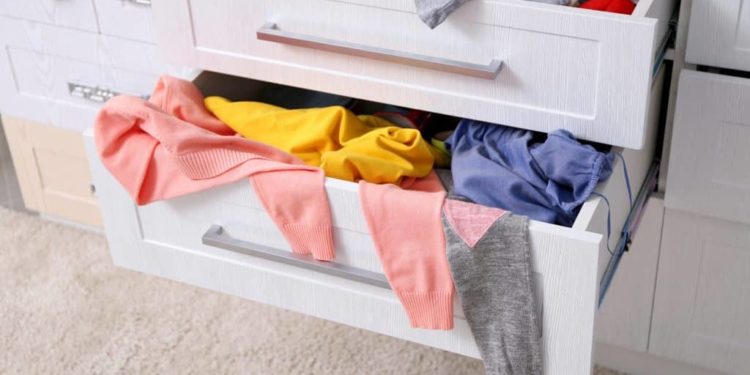No matter how many minimalist trends or closet-cleaning tutorials hit your social feed, one truth remains: clothes accumulate, and managing them takes more than good intentions. From daily outfits to formal wear, gym gear to seasonal staples, every item in your wardrobe demands time and care — especially when it comes to maintenance.
While most people focus on buying, styling, or storing clothes, the less glamorous side — washing, folding, repairing, and rotating — is often overlooked. Yet this is exactly where a thoughtful routine can make your wardrobe work harder for you. Whether you’re a fashion lover, a busy parent, or someone just trying to stay ahead of the laundry curve, a smart system transforms the daily chaos into a surprisingly satisfying process.
Let’s break down how you can bring efficiency, structure, and yes, a little joy to your clothing care routine — with special attention to services like dry cleaning, laundry delivery, and wash and fold delivery, which can support your rhythm in smarter ways.
Step One: Audit and Rotate
Start by taking a full inventory of your current wardrobe. This doesn’t mean you have to do a full KonMari purge every season — but it’s useful to review items quarterly. Ask yourself:
- When did I last wear this?
- Does it fit well and feel comfortable?
- Does it need special cleaning, repair, or replacement?
Once you’ve done a review, rotate your clothes accordingly. Store out-of-season pieces, prioritize frequently worn items, and isolate anything needing repairs or special treatment like dry cleaning.
Taking this first step helps you understand your laundry load in advance, rather than reacting in frustration later when that one needed item is missing or dirty.
Step Two: Define Laundry Categories
Not all clothes are created equal — and neither is the cleaning process. Think beyond “lights” and “darks” and build categories that reflect your lifestyle:
- Everyday wear (t-shirts, jeans, pajamas)
- Workwear (button-downs, slacks, suits)
- Gym and activewear
- Delicates and specialty fabrics
- Linens and bedding
- Dry-clean-only items
By establishing cleaning categories, you’re not just organizing your loads — you’re setting expectations. This clarity helps prevent shrinking, fading, or fabric damage caused by treating every garment the same way.
Services like wash and fold delivery become much more effective when you already know which items are suitable for pickup and which should stay in-house.
Step Three: Map Your Laundry Timeline
Here’s where strategy kicks in. Set a rhythm for laundry that works for your schedule — not against it. Instead of letting laundry build up into a dreaded mountain, distribute tasks evenly:
- Daily: Quick spot-checks or small loads
- Weekly: Main clothing wash, fold, and restock
- Biweekly: Linens, towels, or delicates
- Monthly: Specialty garments or rotate seasonal items
Scheduling a regular laundry delivery or dry cleaning in Austin also helps anchor your timeline. Companies like Ian’s Cleaners offer flexible plans that allow you to slot cleanings into your life — not the other way around.
Step Four: Know When to Outsource
Trying to do everything yourself isn’t always the most efficient or cost-effective option. If your schedule is packed, your apartment lacks a washer/dryer, or you just need support, outsourcing is a smart choice — not a failure.
Here’s when you might want to consider outsourcing:
- You wear a lot of specialty fabrics or structured garments that require dry cleaning
- You have a tight routine and prefer a recurring laundry delivery setup
- You’re in a transition period — moving, traveling, or working long hours
- Your current system leaves you stressed, overwhelmed, or behind
There’s a reason services like Ian’s Cleaners have become increasingly popular. They allow people to reclaim time without sacrificing garment care. With wash and fold delivery, even your basics can be handled professionally — saving you from weekend laundry marathons.
Step Five: Master the Storage Game
Clean clothes deserve clean spaces. Once you’ve completed the cleaning and sorting phase, make sure your storage supports garment longevity. A few tips:
- Use breathable bins and fabric bags for off-season items
- Don’t overcrowd hangers — garments need room to breathe
- Store frequently used items within reach to avoid rummaging
- Keep a small basket or hook near your hamper for single-use items (like dry-clean tags or clothing that needs mending)
Storage isn’t just about space — it’s about protecting your investment. Wrinkled clothes shoved into drawers or left out too long between washes can wear down faster. Give your freshly cleaned clothes the ending they deserve.
Step Six: Set Up a Feedback Loop
Once your system is up and running, it’s time to check in with yourself. Do you still feel rushed on laundry day? Are certain loads consistently harder to manage? Is your delivery schedule aligned with your needs?
By reviewing your routine every month or so, you avoid slipping back into chaos. Small tweaks — like increasing delivery frequency or investing in a second hamper — can make a big difference.
You can also track laundry habits informally. Make a note of how long you go between dry cleaning pickups or how many times a week you’re folding clean clothes. This awareness leads to better decisions in future purchases, storage upgrades, and time planning.
Why It Matters
Clothing care might not be glamorous, but it’s foundational. Your clothes impact how you show up in the world — and how you feel while doing it. Treating the process with the respect it deserves shifts it from a reactive chore into a proactive form of personal organization.
Brand partnerships like those offered by Ian’s Cleaners help individuals and families integrate these ideas with less effort. While the service exists in the background, its impact is visible in how smoothly your weeks flow.
Final Fold
Managing your wardrobe and laundry doesn’t require perfection — just a system. From categorizing your clothes to setting timelines and using smart delivery options, there’s power in treating this daily task as a vital part of your home and self-care routine.
The combination of practical tools and occasional outside help can turn closet chaos into laundry zen — one load at a time.












































































